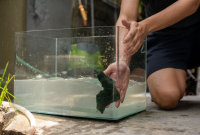In the vibrant world of aquarium enthusiasts, few fish captivate the imagination quite like Betta splendens, commonly known as Siamese fighting fish or simply “Bettas.” These mesmerizing creatures are renowned for their striking colors, unique personalities, and, most notably, their dazzling tail types and breeds. In this comprehensive guide, we will delve deep into the world of Betta splendens, exploring the various tail types and breeds that make them a cherished addition to any aquarium.
Understanding the Basics
Before we dive into the fascinating world of Betta tail types and breeds, it’s essential to establish a fundamental understanding of these beautiful fish. Betta splendens are native to Southeast Asia, where they inhabit slow-moving waters and rice paddies. Their natural habitat has played a pivotal role in shaping their unique characteristics.
Bettas are small, labyrinth fish, which means they possess a specialized organ known as the labyrinth organ, allowing them to breathe air from the surface. This adaptation enables them to thrive in waters with low oxygen levels. In the aquarium hobby, Bettas are celebrated for their vibrant colors, flowing fins, and, at times, aggressive behavior.
Tail Types: A Kaleidoscope of Beauty
One of the most alluring features of Betta splendens is their diverse range of tail types. Each type carries its unique charm and appeal, making it a captivating subject for aquarists. Here are some of the most prominent Betta tail types:
1. Veil Tail (VT)
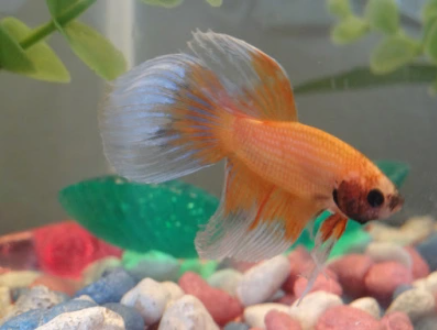
The Veil Tail is perhaps the most common and widely recognized tail type among Betta enthusiasts. It features long, drooping fins that resemble the delicate folds of a curtain. While Veil Tails lack the intricate finnage of some other varieties, their simplicity and grace are undeniably charming.
2. Crowntail (CT)
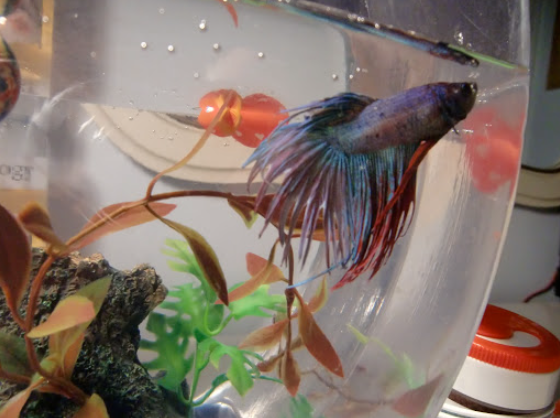
Characterized by its distinctive spiky rays extending beyond the webbing of the fin, the Crowntail is a Betta variety that exudes elegance and uniqueness. The “crown” appearance is created by a reduced webbing between the fin rays, giving the tail a regal and exotic appearance.
3. Halfmoon (HM)

Halfmoon Bettas are named for their tail’s resemblance to a half-moon shape when fully flared. These fish have broad, full fins that can open to a 180-degree angle, creating a breathtaking display of colors and patterns.
4. Double Tail (DT)

A genetic mutation results in the Double Tail Betta having two distinct tails. This makes them stand out from the crowd, and their movements are often described as graceful and unique. Double Tails come in various colors and patterns, making them a sought-after choice among enthusiasts.
5. Delta Tail (DT)
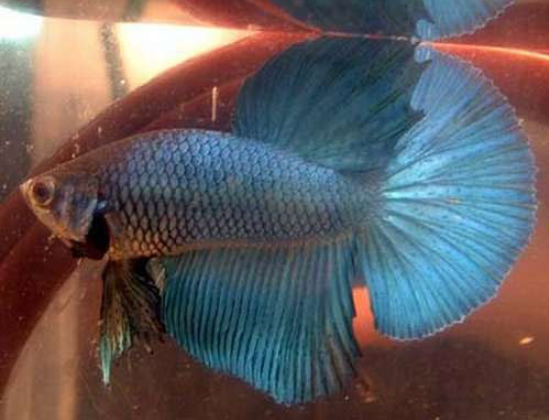
Delta Tails have tails that are similar in shape to the Halfmoon variety but with a slightly less pronounced curvature. They are known for their vibrant colors and can display stunning combinations of hues.
6. Plakat (PK)
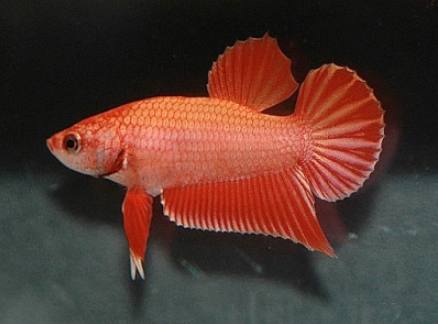
In contrast to the flowing fins of other Betta tail types, Plakat Bettas sport short and stocky tails. They are often preferred for their hardiness and vigor, making them excellent choices for those new to Betta keeping.
7. Super Delta (SD)

Super Delta Bettas are an intermediary between Halfmoon and Delta Tails. Their tails can open to an angle greater than 90 degrees but fall short of the full 180 degrees seen in Halfmoons. They offer a balance between elegance and manageability.
Breeding Betta Splendens
Breeding Betta splendens can be a rewarding yet challenging endeavor. To produce healthy and vibrant offspring, it’s crucial to understand the intricacies of Betta breeding. Here are some key points to consider:
Selecting Compatible Pairs
Successful breeding starts with selecting compatible pairs. This involves considering not only the physical characteristics but also the temperament of the Bettas. Introducing a male and female with contrasting tail types can result in visually striking offspring.
Providing the Right Environment
Creating a conducive breeding environment is essential. A separate breeding tank with gentle filtration, live plants, and hiding spots is necessary. The water temperature should be maintained between 78°F to 80°F (25°C to 27°C).
The Spawning Process
Betta spawning typically begins with an elaborate courtship dance, during which the male displays his fins and attempts to entice the female. Once the female lays her eggs, the male fertilizes them, and they attach to the nest built by the male.
Caring for Fry
After hatching, Betta fry are initially too small to consume traditional fish food. They rely on microscopic organisms like infusoria and baby brine shrimp. Gradually, as they grow, they can transition to larger food items.
Conclusion
Betta splendens, with their captivating tail types and breeds, have carved a special place in the hearts of aquarists worldwide. Their mesmerizing beauty and engaging behaviors make them a popular choice for both beginners and experienced hobbyists. Whether you’re drawn to the flowing elegance of a Halfmoon or the unique charm of a Crowntail, Betta splendens offer a kaleidoscope of possibilities for aquarium enthusiasts. Understanding their diverse tail types and the intricacies of breeding allows us to appreciate the rich tapestry of this extraordinary species. So, go ahead and explore the world of Betta splendens – a world where vibrant colors and graceful fins converge in aquatic harmony.

